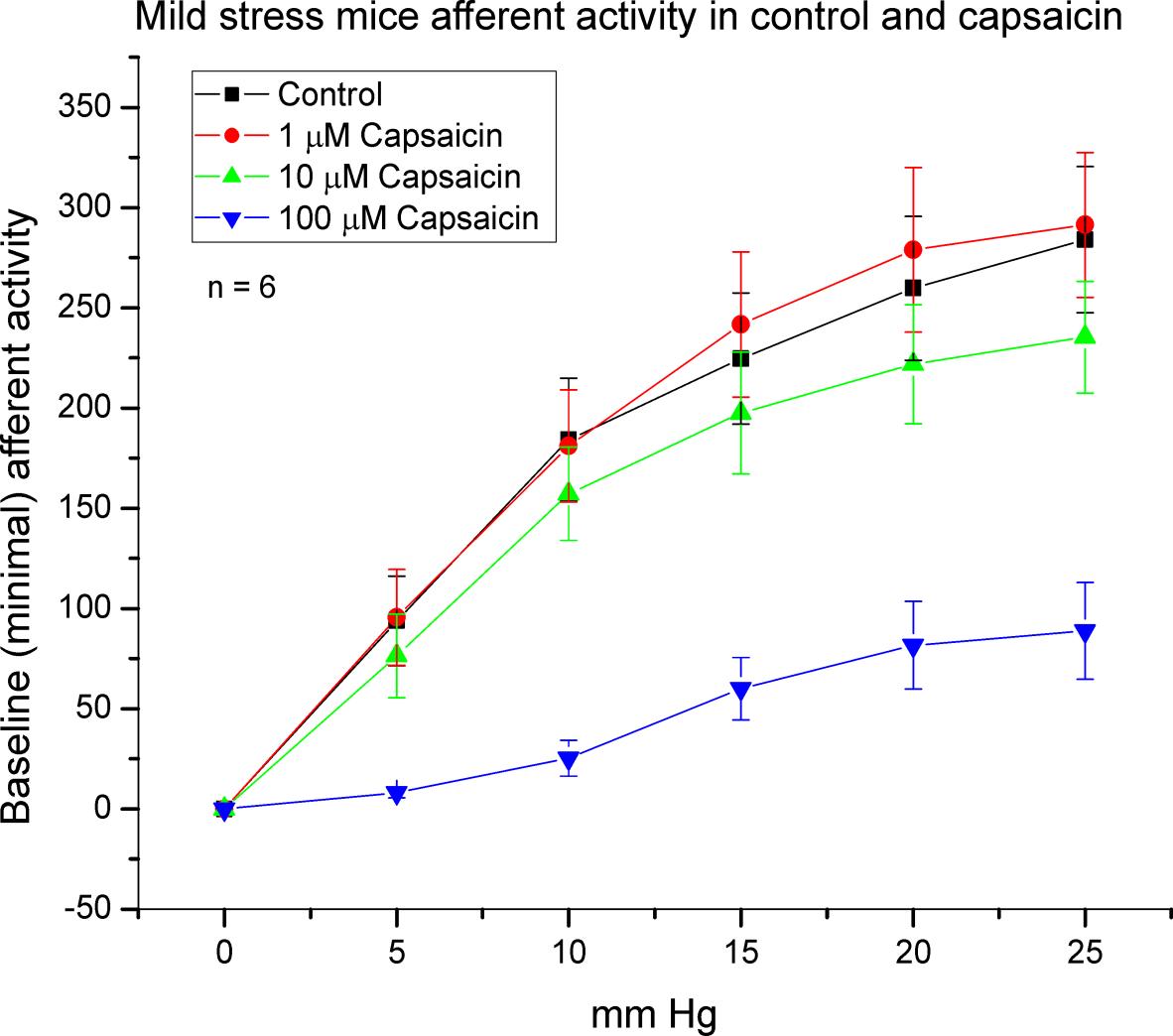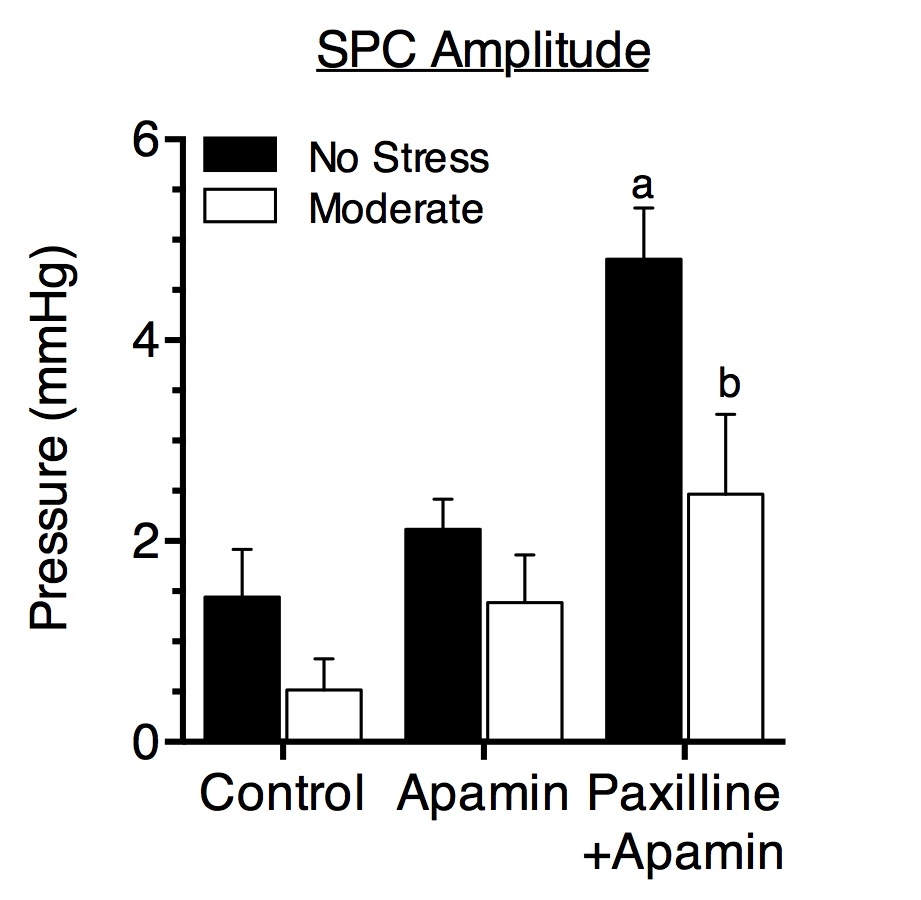|
Back to Fall Congress
The Role of TRPV1 Vanilloid Receptor and BK Calcium Activated Potassium Channels in Modifying Afferent Nerve Activity in a Bladder Model of Social Stress
Gerald C. Mingin, Jr., M.D.1, Nathan Tykocki, PhD2, Thomas Heppner, PhD2, Mark Nelson, PhD2.
1University of Vermont/Vermont Children's Hospital, Burlington, VT, USA, 2University of Vermont, Burlington, VT, USA.
Background- Social stress has been shown to impact bladder function in humans. In particular, we have shown that mild stress leads to bladder over-activity in mice. We hypothesize that TRPV1 a member of the transient receptor potential vanilloid receptor family is up-regulated by social stress leading to an increase in afferent baseline nerve activity in the mouse bladder. In addition we predict that social stress decreases large conductance calcium-activated potassium channel (BK) activity where BK channels are involved in generation of spontaneous phasic contractions (SPC’s).
Methods- Six week old, male, C57CBl6 mice were exposed for a total of 2 weeks at 1 hour, via barrier cage to a C57CBl6 retired breeder aggressor mice. The bladders were harvested in order to perform ex-vivo pressure studies and evaluate bladder afferent nerve activity. Ex-vivo pressure studies were also performed with intravesical installation of the TRPV1 agonist capsaicin (1, 10, 100 µM), the SK antagonist apamin (300 nM) and the BK antagonist paxilline (1 µM).
Results- Afferent nerve activity was assessed in the control and mild stress mice after application of capsaicin. In the control group low concentrations of capsaicin increased afferent activity, while activity was decreased at 100 µM of capsaicin. In contrast capsaicin decreased activity in a concentration dependent manner in the mild stress group. Inhibition of BK channels, but not SK channels, potentiates SPC amplitude and afferent activity frequency in both control and mild stress mice. However this potential is significantly lower in the social stress group.


Conclusion-
The application of capsaicin in the social stress group demonstrates a consistent decrease in afferent activity, suggesting that stress increases the number of TRPV1 channels. In addition stress leads to a down regulation and/or desensitization of BK channel activity that is reflected in decreased amplitude of SPC’s. The role of TRPV1 channels in up-regulating baseline afferent activity and that of BK channels down-regulating SPC activity remains to be determined. We conclude that both of these channels play a role in the regulation of afferent nerve activity in the stressed bladder, perhaps with BK channels providing a break or check on TRPV1 channel activity. Further refinment in our understanding of the role these channels play may allow for future development of new pharmacologic agents in the treatment of children with overactive bladder.
Back to Fall Congress
|


